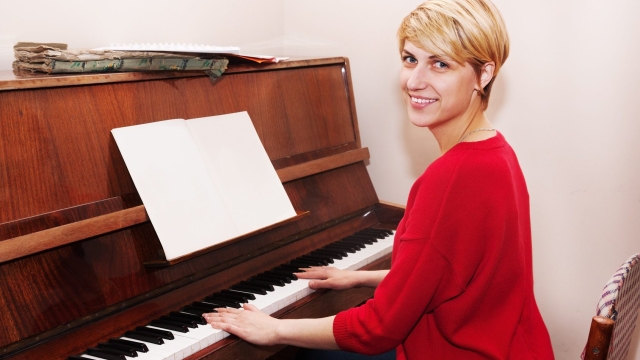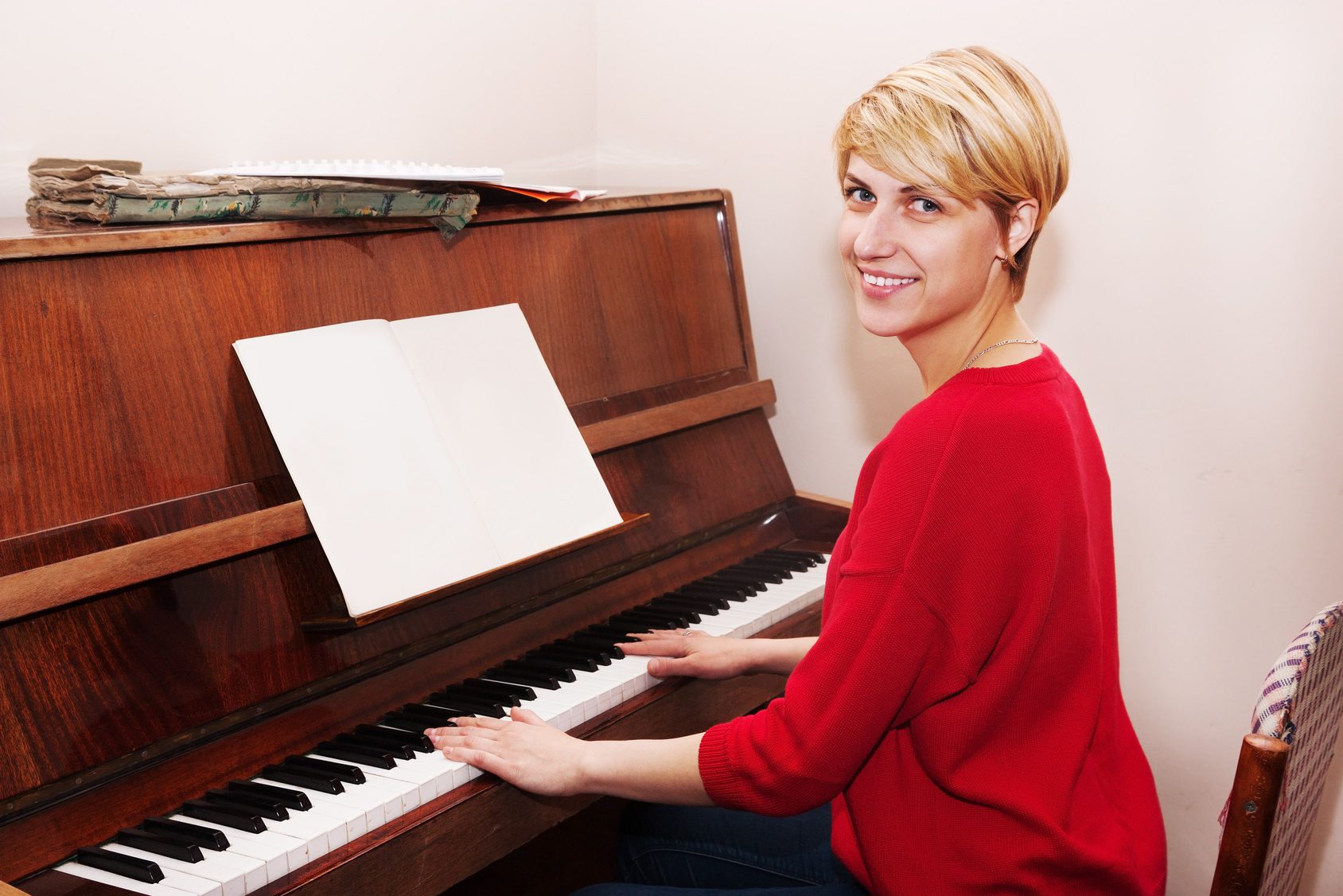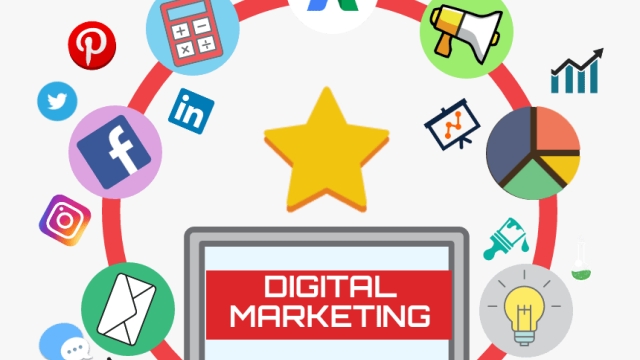As human beings, we have always been captivated by the harmonious melodies that can be created on a piano. From the delicate tinkling of the keys to the thunderous chords that reverberate through the air, the piano has long been a symbol of musical expression. But what if we could take this instrument, steeped in tradition, and infuse it with the power of modern technology? This is where the concept of the mixed reality piano comes into play.
Imagine a world where learning to play the piano becomes an immersive and interactive experience. A world where traditional sheet music is accompanied by virtual visualizations, allowing learners to see the notes come to life before their very eyes. With the advent of mixed reality technology, this dream is now a reality.
The mixed reality piano combines the familiarity and elegance of a traditional piano with the limitless possibilities of the virtual realm. By wearing a headset and utilizing motion-sensing controllers, users can not only hear the music they are playing but also see a whole new dimension of musical expression. Whether it’s watching their notes cascade down from the virtual sky or exploring different environments that react to their every keystroke, this innovative instrument opens up a world of creative exploration.
The power of the mixed reality piano lies not only in its ability to enhance the learning experience but also in its potential to bridge the gap between novice and virtuoso. Through virtual tutorials and interactive lessons, beginners can receive real-time feedback, allowing them to refine their technique and improve their skills at a pace that suits them. Meanwhile, seasoned pianists can push the boundaries of their artistry by experimenting with different sounds, effects, and even collaborating with other musicians in the digital realm.
With the mixed reality piano, the once solitary act of playing the piano transforms into a social and collaborative experience. Imagine joining a virtual orchestra, playing alongside musicians from around the world, or even composing your masterpiece in a digital symphony. The possibilities are endless, and the boundaries of what is possible in the world of music are pushed to new heights.
In conclusion, the mixed reality piano represents a harmonious fusion of tradition and innovation. This groundbreaking instrument allows us to step into a world where musical learning becomes an engaging, immersive, and collaborative endeavor. As we embrace the power of mixed reality, we also embrace a new way of experiencing and creating music. The possibilities are infinite, and the harmonies we create are limited only by our imagination.
Benefits of Mixed Reality Piano
The mixed reality piano offers a range of benefits that can greatly enhance the process of piano learning. By merging the virtual and physical worlds, this innovative technology revolutionizes the way people engage with and acquire piano skills. Here are three key advantages of using the mixed reality piano:
Immersive Learning Experience: With the mixed reality piano, learners are immersed in a virtual environment that simulates real-life piano playing. This immersive experience allows them to visualize and interact with the piano in a highly engaging and realistic manner. By providing a hands-on approach to learning, students can develop a deeper understanding of musical concepts and technical skills at their own pace.
Interactive Feedback: One of the remarkable features of the mixed reality piano is its ability to provide instant and accurate feedback. As users play the keys, the technology tracks their progress and evaluates their performance in real-time. This valuable feedback helps learners to identify areas for improvement, such as timing, technique, and accuracy. By receiving immediate guidance, students can make necessary adjustments and refine their playing skills effectively.
Personalized Learning Journey: The mixed reality piano caters to individualized learning experiences, allowing students to tailor their practice sessions according to their specific needs. Whether a beginner or an advanced player, learners can access a variety of learning materials and exercises tailored to their skill level. Additionally, the piano’s intelligent algorithms adapt to the user’s progress, offering customized recommendations and challenges to ensure continuous growth and motivation.

Overall, the mixed reality piano opens up new possibilities for piano enthusiasts by offering an immersive, interactive, and personalized learning experience. Through its combination of virtual and physical elements, this technology empowers learners to unleash their musical potential and embark on an exciting journey of piano mastery.
How Mixed Reality Enhances Piano Learning
The integration of mixed reality technology in piano learning has revolutionized the way aspiring musicians acquire and develop their skills. By bridging the gap between the virtual and real worlds, mixed reality piano applications provide an immersive and interactive experience that enhances the learning process.
One key advantage of mixed reality piano is the ability to visualize musical notes and finger placements in real-time, right before the player’s eyes. This visual feedback allows learners to quickly understand and grasp the fundamentals of piano playing, as they can see the correlation between the notes played and the corresponding keys on the virtual keyboard. Moreover, this visual aid helps cultivate proper hand positioning and technique from the very beginning, setting a strong foundation for future progress.
Mixed reality also enables learners to engage in a dynamic and customizable learning environment. With virtual guides and tutorials, individuals can receive personalized feedback and guidance tailored to their specific needs and skill level. This empowers learners to progress at their own pace and explore various learning approaches that suit their unique learning styles. Furthermore, the virtual environment provides a safe space for experimentation and practice, allowing learners to make mistakes and learn from them without fear of judgment or consequences.
Another powerful aspect of mixed reality piano is its potential for collaboration and performance. Through virtual avatars and online connectivity, learners can connect with other piano enthusiasts from around the world, participating in collaborative jam sessions or receiving real-time feedback from experienced musicians. This not only fosters a sense of community and camaraderie but also encourages motivation and healthy competition, as learners can push themselves further in their musical journey.
Easy Tutorial Piano
In conclusion, the integration of mixed reality technology in piano learning offers immense benefits for aspiring musicians. By providing visual feedback, personalized guidance, and fostering collaboration, mixed reality piano applications enhance the learning experience, making it more interactive, engaging, and effective. As technology continues to advance, we can expect further advancements in mixed reality piano, unlocking even more potential for musical growth and creativity.
Future Implications of Mixed Reality in Piano Education
The advancement of mixed reality technology has opened up exciting possibilities in the field of piano education. By merging the virtual and physical worlds, the mixed reality piano offers unique benefits and holds great potential for the future of learning this majestic instrument.
First and foremost, the mixed reality piano provides an immersive and interactive learning experience. Learners can visually see the keys, notes, and hand movements in real-time through the mixed reality headset. This visual representation enhances the understanding of piano techniques and music theory, making the learning process more engaging and effective.
Furthermore, the mixed reality piano allows for personalized and adaptive learning. With integrated sensors, the system can analyze the user’s performance, providing instant feedback and customized practice recommendations. This personalized approach helps learners progress at their own pace, focusing on areas that require improvement, and optimizing their learning experience.
In addition to individual learning, the mixed reality piano offers collaborative opportunities. Learners can connect with teachers, peers, and musicians from around the world through virtual spaces. This opens up avenues for remote piano lessons, virtual ensembles, and collaborative performances. The mixed reality piano creates a global community, fostering cultural exchange and collaboration among piano enthusiasts and professionals.
In conclusion, the future implications of mixed reality in piano education are truly remarkable. The immersive nature of the technology, coupled with personalized learning and global collaboration, revolutionizes the way we approach piano learning. As this technology continues to develop, we can expect to witness an even greater fusion of the virtual and physical worlds, nurturing the next generation of talented pianists.



